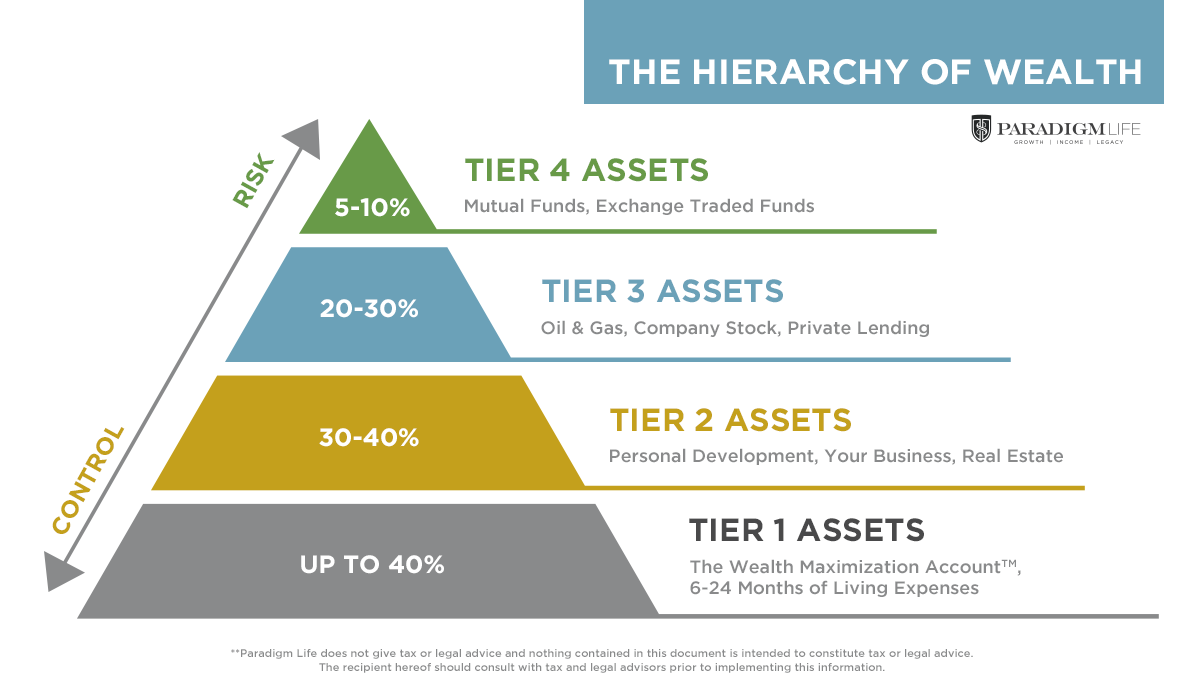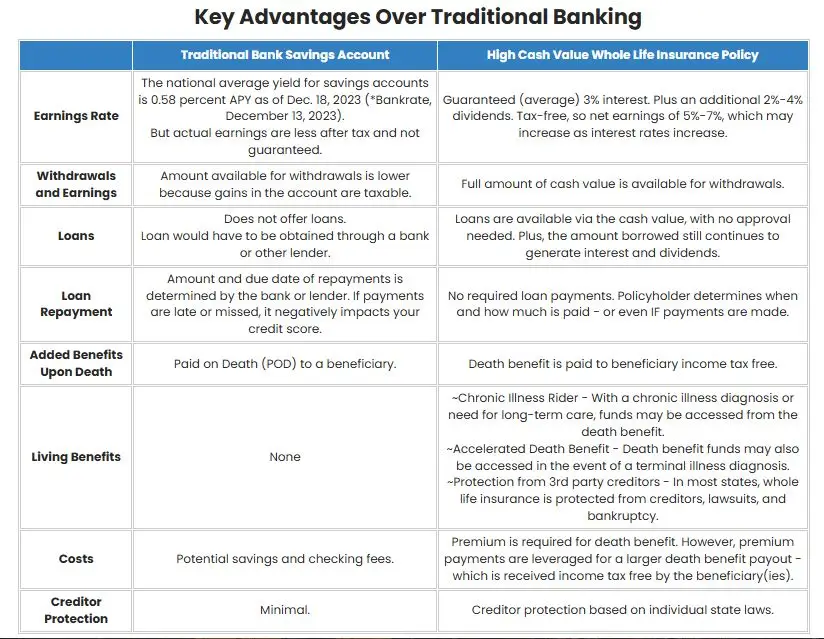All Categories
Featured
Table of Contents
Okay, to be fair you're actually "banking with an insurance provider" instead of "financial on yourself", yet that idea is not as simple to offer. Why the term "infinite" banking? The concept is to have your money operating in several areas at the same time, as opposed to in a single location. It's a little bit like the concept of getting a house with cash, after that obtaining against your home and placing the cash to work in another investment.
Some individuals like to talk about the "rate of money", which generally suggests the very same point. In reality, you are simply making the most of utilize, which works, but, certainly, functions both means. Frankly, all of these terms are frauds, as you will certainly see below. Yet that does not mean there is nothing beneficial to this idea once you surpass the advertising and marketing.
The entire life insurance policy market is tormented by extremely expensive insurance, massive commissions, shady sales methods, reduced rates of return, and inadequately enlightened customers and salespeople. If you desire to "Financial institution on Yourself", you're going to have to wade right into this market and in fact purchase whole life insurance. There is no replacement.
The guarantees integral in this item are critical to its feature. You can borrow versus the majority of kinds of money value life insurance policy, but you should not "bank" with them. As you get an entire life insurance policy plan to "financial institution" with, bear in mind that this is a completely separate area of your monetary strategy from the life insurance policy area.
Purchase a big fat term life insurance policy policy to do that. As you will certainly see below, your "Infinite Financial" plan actually is not mosting likely to reliably provide this vital monetary feature. An additional problem with the fact that IB/BOY/LEAP depends, at its core, on an entire life policy is that it can make buying a plan troublesome for much of those interested in doing so.
Non Direct Recognition Life Insurance Companies
Unsafe pastimes such as SCUBA diving, rock climbing, sky diving, or flying also do not mix well with life insurance coverage items. The IB/BOY/LEAP supporters (salesmen?) have a workaround for youbuy the plan on somebody else! That may work out great, because the factor of the plan is not the fatality advantage, however keep in mind that buying a plan on minor children is extra pricey than it should be given that they are typically underwritten at a "typical" rate instead of a chosen one.

Many plans are structured to do one of two things. The compensation on an entire life insurance coverage plan is 50-110% of the first year's premium. Sometimes policies are structured to make the most of the fatality benefit for the premiums paid.
The price of return on the plan is really important. One of the best methods to make best use of that factor is to obtain as much cash money as feasible into the plan.
The ideal way to boost the price of return of a plan is to have a relatively tiny "base policy", and after that put even more cash money into it with "paid-up enhancements". Instead of asking "How little can I put in to obtain a particular survivor benefit?" the question ends up being "Just how a lot can I legitimately took into the plan?" With more money in the plan, there is more cash money worth left after the prices of the fatality benefit are paid.
A fringe benefit of a paid-up addition over a regular costs is that the compensation price is lower (like 3-4% instead of 50-110%) on paid-up additions than the base plan. The much less you pay in commission, the greater your price of return. The price of return on your cash value is still mosting likely to be unfavorable for a while, like all cash worth insurance policies.
It is not interest-free. As a matter of fact, it might cost as long as 8%. A lot of insurance coverage business only supply "direct recognition" financings. With a direct acknowledgment finance, if you borrow out $50K, the reward price related to the money worth annually only uses to the $150K left in the plan.
Infinite Bank Concept
With a non-direct recognition car loan, the firm still pays the exact same returns, whether you have actually "borrowed the cash out" (practically versus) the policy or not. Crazy, right? Why would they do that? That recognizes? But they do. Typically this attribute is coupled with some much less helpful aspect of the plan, such as a reduced dividend rate than you may get from a plan with straight recognition car loans (infinite banking toolkit).
The business do not have a source of magic cost-free cash, so what they give up one place in the plan have to be drawn from an additional place. However if it is extracted from a function you care much less around and take into an attribute you care much more around, that is a good idea for you.
There is one more important function, usually called "laundry loans". While it is excellent to still have rewards paid on cash you have gotten of the plan, you still need to pay interest on that lending. If the dividend rate is 4% and the car loan is billing 8%, you're not precisely coming out in advance.
With a wash financing, your funding interest rate is the exact same as the dividend rate on the plan. While you are paying 5% rate of interest on the loan, that passion is entirely countered by the 5% reward on the loan. So in that respect, it acts just like you withdrew the cash from a checking account.

5%-5% = 0%-0%. Same very same. Therefore, you are currently "banking on yourself." Without all 3 of these elements, this policy simply is not mosting likely to function really well for IB/BOY/LEAP. The most significant issue with IB/BOY/LEAP is individuals pushing it. Almost all of them stand to make money from you buying right into this concept.
There are several insurance coverage representatives talking regarding IB/BOY/LEAP as a function of whole life who are not actually selling policies with the required attributes to do it! The trouble is that those who understand the idea best have an enormous problem of interest and generally inflate the benefits of the concept (and the underlying policy).
How To Create Your Own Banking System
You must compare loaning against your plan to taking out cash from your financial savings account. No cash in cash money worth life insurance coverage. You can place the money in the financial institution, you can invest it, or you can purchase an IB/BOY/LEAP policy.
You pay tax obligations on the interest each year. You can conserve some more money and put it back in the financial account to start to make rate of interest again.
It grows throughout the years with capital gains, dividends, rental fees, etc. A few of that income is taxed as you accompany. When it comes time to purchase the boat, you offer the investment and pay tax obligations on your long-term resources gains. Then you can save some even more cash and buy some even more investments.
The cash worth not utilized to spend for insurance and commissions expands throughout the years at the dividend price without tax drag. It begins out with adverse returns, but ideally by year 5 or so has broken even and is expanding at the returns rate. When you most likely to acquire the boat, you obtain versus the plan tax-free.
Infinite Banking Method
As you pay it back, the money you paid back begins expanding once again at the returns rate. Those all job rather likewise and you can compare the after-tax prices of return.
They run your credit rating and give you a loan. You pay interest on the borrowed money to the bank until the funding is repaid. When it is paid off, you have a virtually worthless watercraft and no money. As you can see, that is not anything like the initial 3 choices.
Latest Posts
Self Banking Whole Life Insurance
Infinite Wealth And Income Strategy
Nelson Nash Bank On Yourself